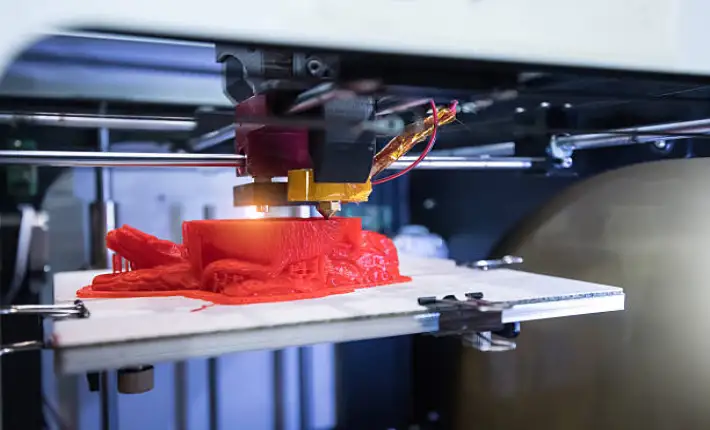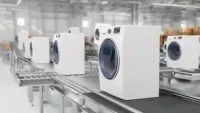You might think that vacuum forming plastic in China is a complex and intimidating process, but it’s a highly versatile and cost-effective manufacturing method. By understanding the intricacies of vacuum forming, you can open up a world of possibilities for producing precision parts and components for various industries. From automotive to medical, the applications are vast, and China offers a competitive landscape for suppliers. But how do you navigate this landscape to find reliable partners and guarantee successful partnerships? Let’s explore the processes, applications, and suppliers that can help you achieve your manufacturing goals.
Understanding Vacuum Forming Processes
Your manufacturing process likely involves working with plastic materials, and understanding vacuum forming processes is essential to producing high-quality products. The vacuum forming process involves heating a plastic sheet until it becomes pliable, then molding it onto a shape or pattern using a vacuum. This process allows for highly accurate and precise creation of complex shapes and designs.
When working with a vacuum forming service, you can expect a high level of customization. Custom vacuum forming enables you to create unique products that meet specific requirements. A vacuum forming manufacturer will work closely with you to understand your needs and produce products that meet your specifications.
The vacuum forming process involves several stages, including tooling, molding, and trimming. Tooling involves creating a mold or pattern to shape the plastic sheet. Molding involves heating and shaping the plastic, while trimming involves removing excess material to create a finished product. By understanding these stages, you can optimize your manufacturing process and produce high-quality products efficiently.
Common Applications of Vacuum Forming
Numerous industries benefit from the versatility and precision of vacuum-forming plastic. Vacuum-forming products are found in various sectors, including automotive, aerospace, medical, and consumer goods. In the automotive industry, vacuum forming creates bumpers, dashboards, and other interior components. In aerospace, it’s utilized for producing aircraft interior components and satellite parts. The medical sector relies on vacuum forming for creating medical device components, such as trays and blisters.
As a thermoforming products manufacturer or supplier, you can cater to these industries by producing high-quality vacuum forming plastic products. For instance, you can create point-of-purchase displays, signs, and packaging materials for the retail industry. In the food industry, vacuum forming produces containers, lids, and other packaging solutions. Additionally, you can create vacuum forming products for the sports and leisure industry, such as kayak hulls, canoes, and other watercraft components. By understanding the diverse applications of vacuum forming, you can identify opportunities to expand your product offerings and cater to a broader customer base.
Benefits of Vacuum Forming in China
In China, vacuum forming has become vital for many manufacturers, driven by the country’s rapid industrialization and increasing demand for high-quality products. As you explore the benefits of vacuum forming in China, you’ll discover that it offers a cost-effective solution for producing complex, precision parts. With vacuum forming, you can create large, intricate parts with high accuracy, making it an ideal process for aerospace, automotive, and medical industries.
Additionally, vacuum forming allows for rapid prototyping, enabling you to test and refine your designs quickly. You’ll also appreciate the flexibility of vacuum forming, which can be used with various materials, including ABS, PVC, and PETG. By partnering with a reputable vacuum forming supplier, you can tap into their expertise and resources to develop customized vacuum forming solutions that meet your specific needs.
This can help you streamline your production process, reduce lead times, and improve product quality. Working with a trusted thermoforming manufacturer or company can also provide access to advanced technologies and equipment, further enhancing the benefits of vacuum forming in China.
Finding Reliable Vacuum Forming Suppliers
As you reap the benefits of vacuum forming in China, the next step is finding a reliable supplier who can provide high-quality, cost-effective solutions that meet your needs. This involves researching and evaluating potential suppliers to guarantee they have the necessary expertise, equipment, and quality control measures in place.
When searching for a vacuum forming company, look for suppliers with experience in custom thermoforming services. Guangzhou SME Plastic Corp, for instance, specializes in providing tailored thermoforming solutions for various industries. Consider their production capacity, material options, and lead times to guarantee they meet your project requirements.
Assessing a supplier’s quality control processes, including material sourcing, prototyping, and testing procedures, is essential. A reliable custom thermoforming supplier should be able to provide certifications, such as ISO 9001, and demonstrate a commitment to continuous improvement. By doing your due diligence, you can partner with a trusted supplier to help you achieve your vacuum forming goals.
Best Practices for Vacuum Forming Partnerships
Establishing a successful vacuum forming partnership requires a collaborative approach that aligns with your project goals. You should clearly define your project requirements and expectations to guarantee your partner understands your needs. When selecting a partner, consider factors such as their experience with similar projects, their thermoforming process capabilities, and their quality control measures. Guangzhou SME Plastic Co Ltd, a leading thermoforming solution provider, emphasizes the importance of open communication and regular updates throughout the project lifecycle.
You should establish an explicit agreement outlining roles, responsibilities, and timelines to certify a smooth partnership. Define the scope of work, including design, material selection, and production schedules. Regularly review and discuss project progress, addressing any issues promptly to prevent delays. By working closely with your partner, you can leverage their expertise to optimize your thermoforming process and guarantee high-quality products. With a collaborative approach, you can trust that your partner, such as SME Plastic, will deliver a customized thermoforming solution that meets your project requirements.
Conclusion
As you navigate the complex landscape of vacuum forming plastic in China, remember that it’s a journey through a dense forest, where each step requires careful consideration. The processes, applications, and suppliers are the trees that guide you, but it’s up to you to chart the course. By understanding the intricacies of vacuum forming, you’ll avoid the pitfalls of misinformation and emerge with a clear vision, ready to forge strong partnerships and bring your project to life.

Vivan Henderson, a professional photographer born in Texas. Photography is his passion. He was fond of nature in his childhood. So he took his passion as a profession. He is basically nature photographer but also take other type of photo. He completed graduation in computer science from Texas Tech University. He lives in Houston with his wife and two children’s.





